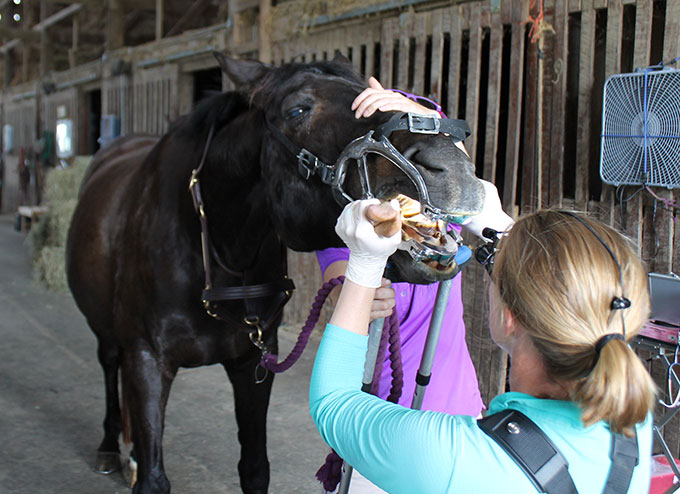
Vets Discuss How They Use SAA in Equine Practice
An SAA test can identify illness in horses, and it can also ensure they’re healthy enough for other procedures, such as surgery. Here’s a look into how some vets use SAA in their practices.
News and issues for equine health professionals

An SAA test can identify illness in horses, and it can also ensure they’re healthy enough for other procedures, such as surgery. Here’s a look into how some vets use SAA in their practices.

Veterinarians are using chiropractic techniques more frequently to evaluate and treat back disorders in horses. Here, a CSU professor and researcher outlines basic principles.

Veterinarians might soon be able to diagnose sarcoids in horses using a simple blood test rather than an invasive biopsy. Here’s what researchers are studying.

Consider the big picture—from farrier care and diet to environment and genetics—when working to keep horse hooves healthy.

Researchers and veterinarians around the world strive to learn more about the lamellae and have made scientific advances in laminitis diagnosis, treatment, and prevention over the past several years. Here’s what we know.

Laminitis can be challenging to treat, but using acupuncture in conjunction with traditional therapies might improve results, one study found. Here’s how.

A standing equine PET scanner will soon be available at Santa Anita Park. Veterinarians and researchers hope it will ultimately help identify subtle pre-existing bone changes before they lead to catastrophic injuries.

Researchers said evaluating castration complications allowed them to arrive at a benchmark to which other equine practitioners can audit their individual and practice performances, possibly leading to even safer gelding procedures.

Researchers confirmed that a technique called acoustic myography could be useful for evaluating suspensory ligament function, which could mean more straightforward diagnoses, treatment recommendations, and monitoring of these injuries as they heal.

Dr. Kevin Haussler of Colorado State University describes how a saddle should fit horses and how he investigates saddle-fit issues that might cause back pain.

With an estimated 88% of horses over 20 years of age diagnosed with dental disease, veterinarians must be sure to maintain these patients differently than their younger counterparts.

Researchers confirmed that ultrasound is a useful and economical screening tool to identify humeral stress fractures and can be used with radiography to monitor healing.

Learn about the current challenges of medication regulation and drug testing in the race and sport horse industries.

While physicians have used capsule endoscopy in humans for more than a decade, it’s only recently become commercially available on the veterinary market for dogs and shows promise for use in horses.

Recognizing and treating club feet in young horses can help them succeed in their intended discipline and, ultimately, prevent lifelong hoof complications.

The transition from baby to permanent teeth often goes smoothly, but issues can arise along the way.
Stay on top of the most recent Horse Health news with
"*" indicates required fields